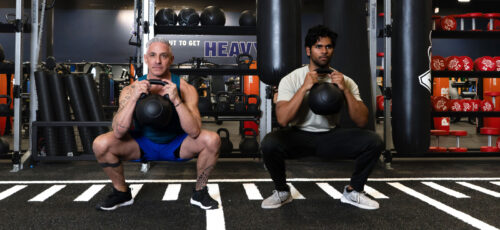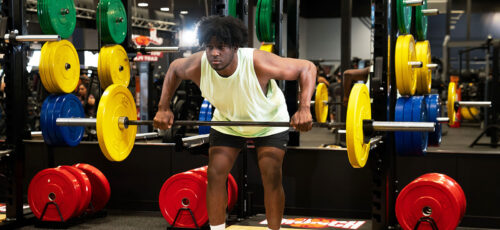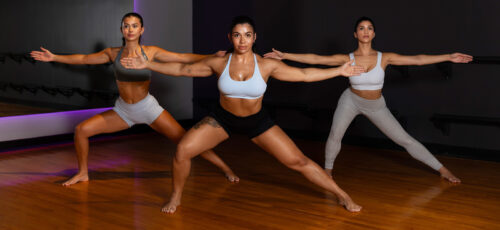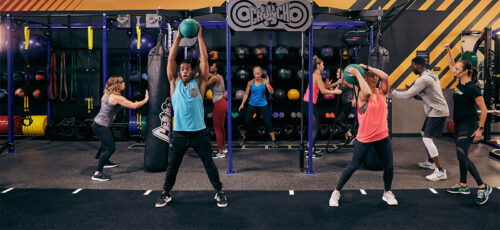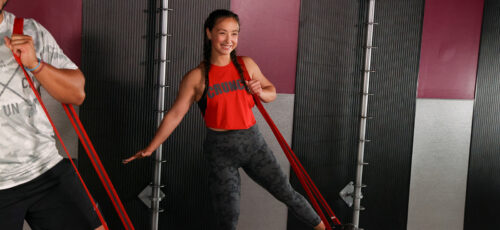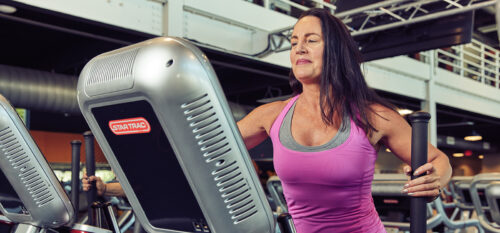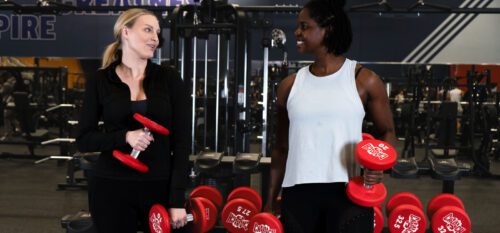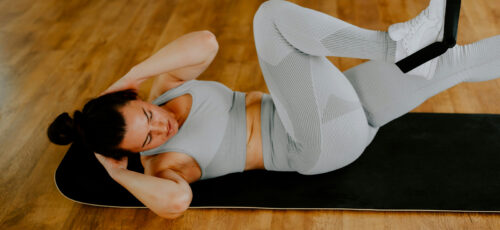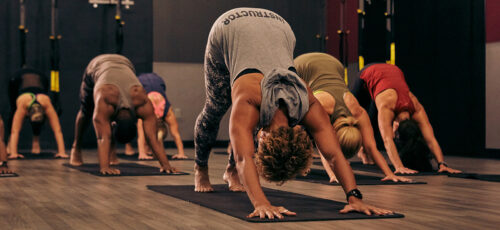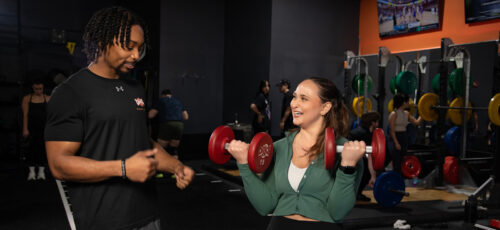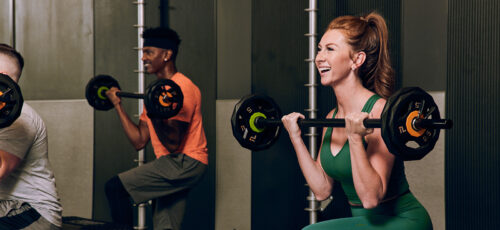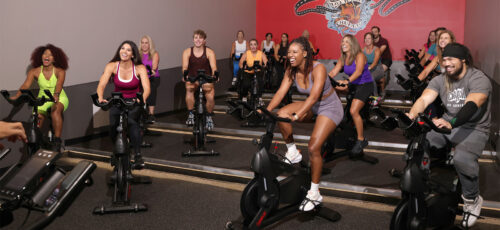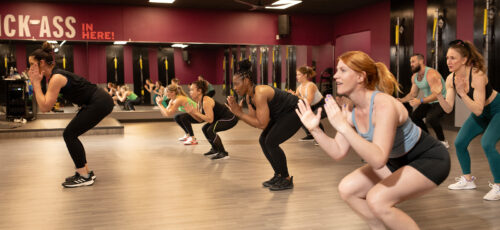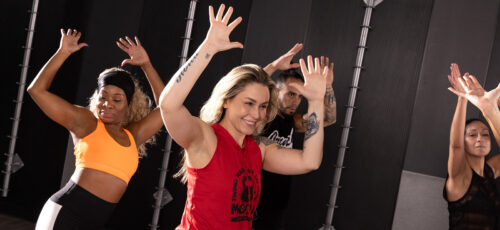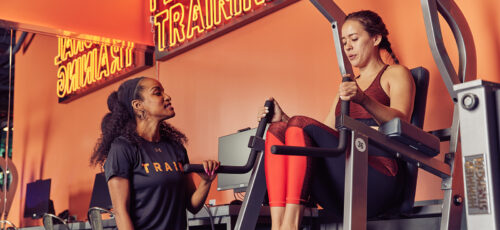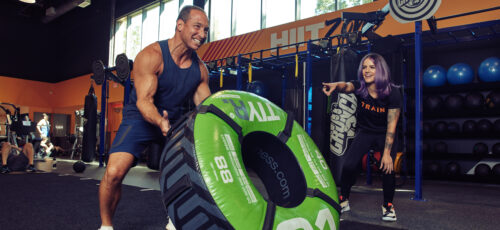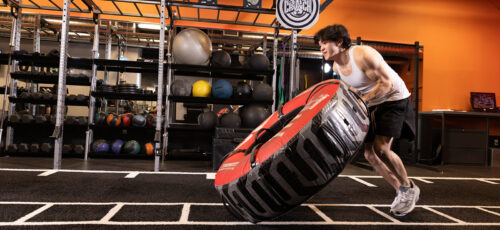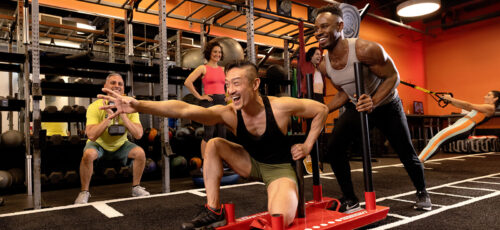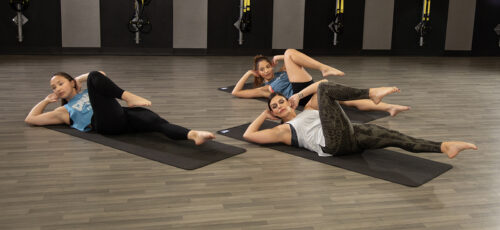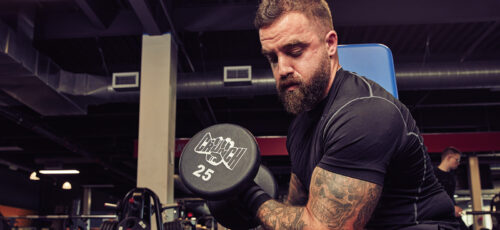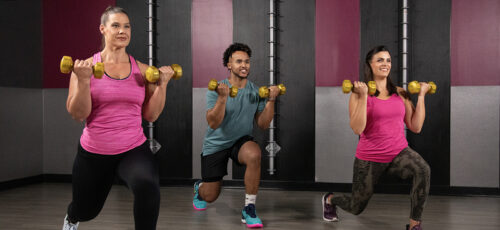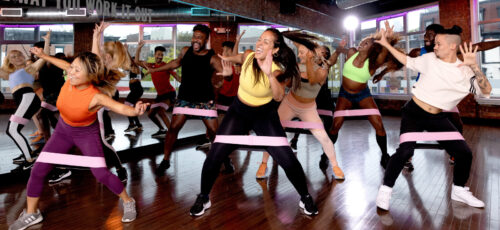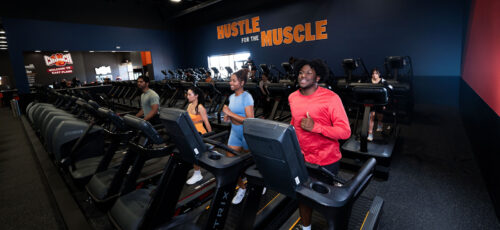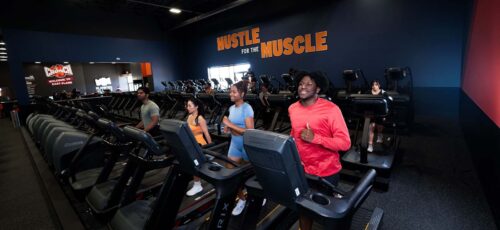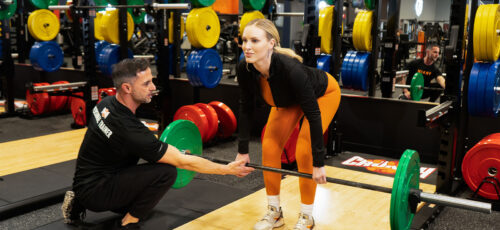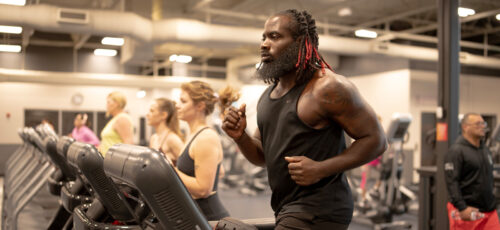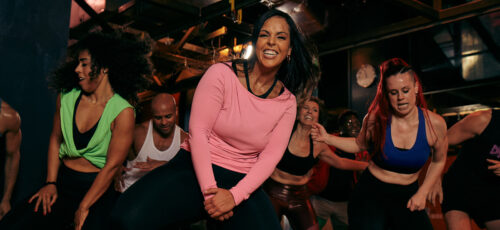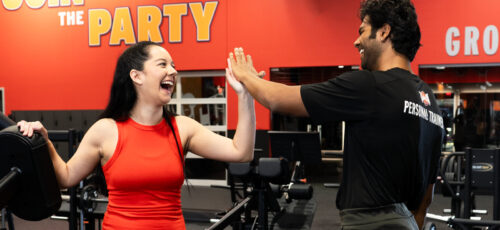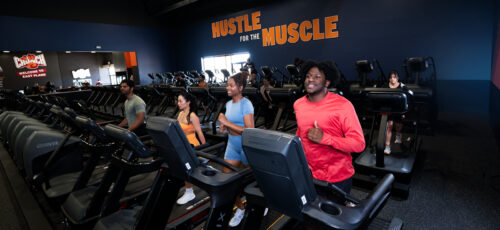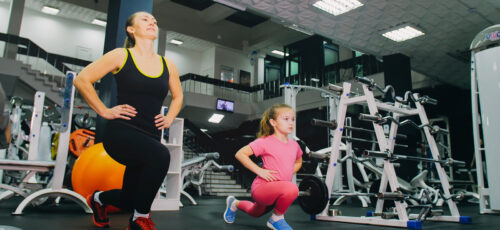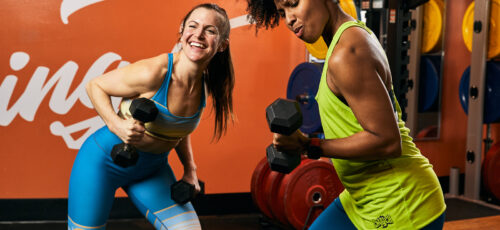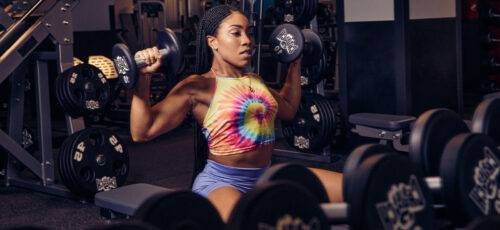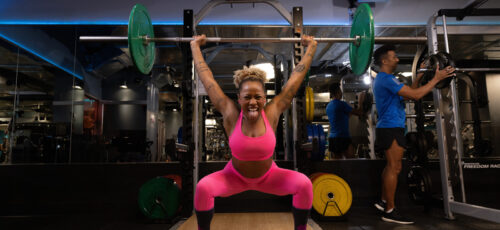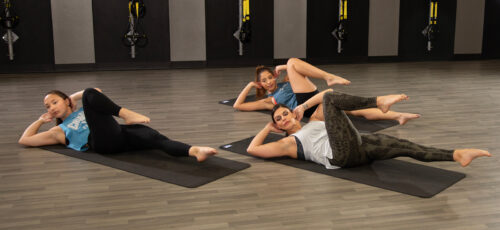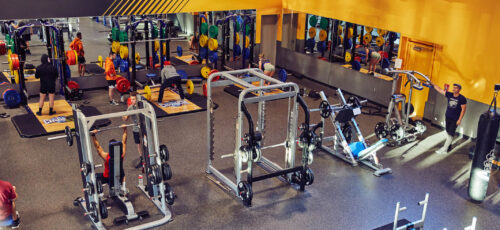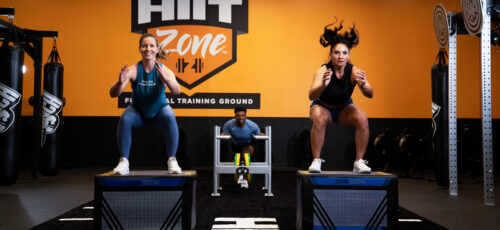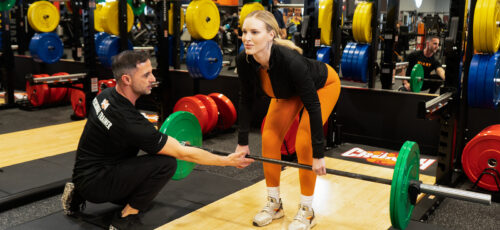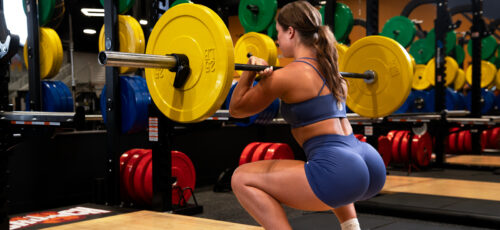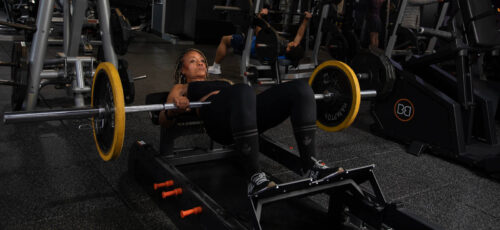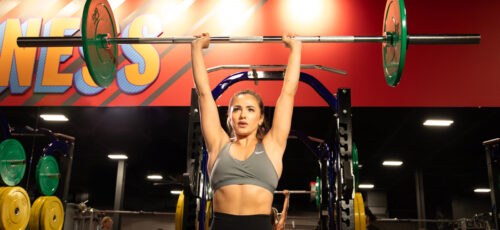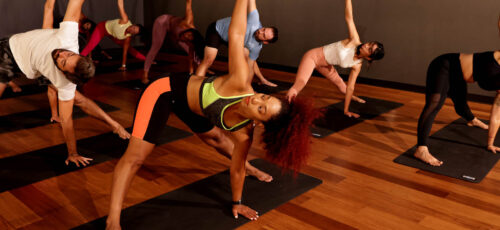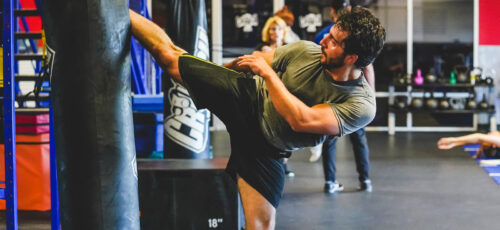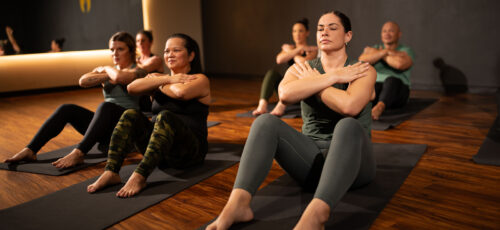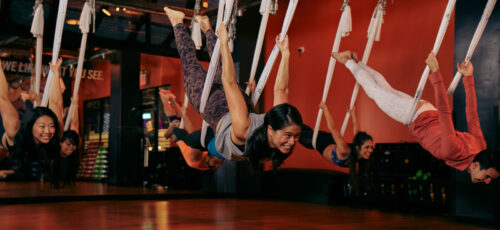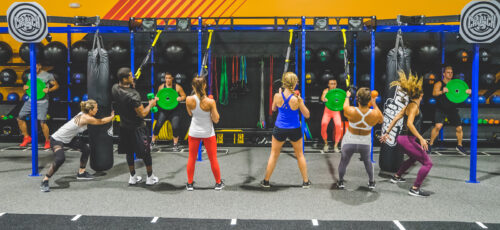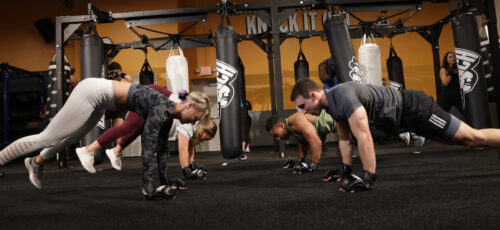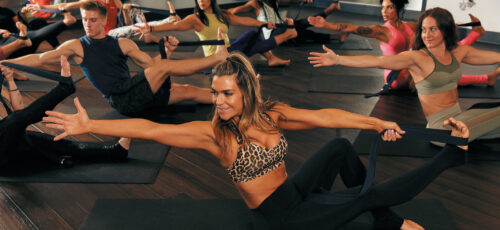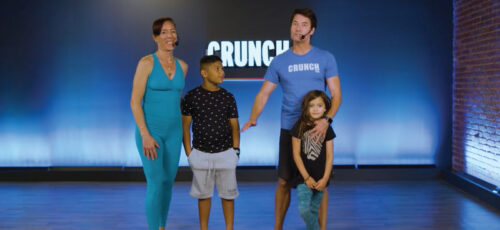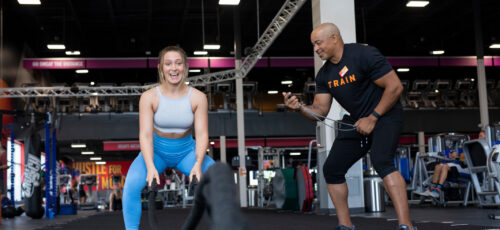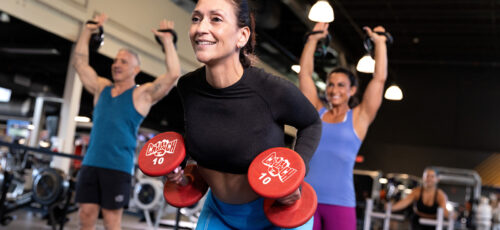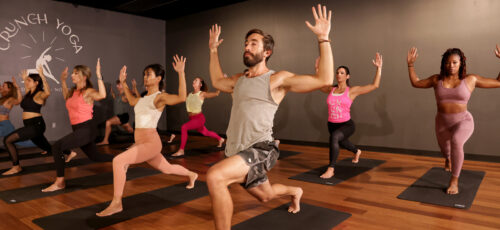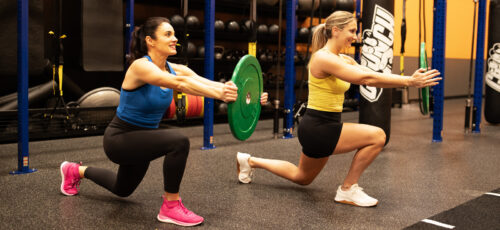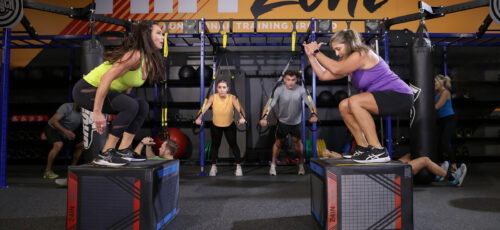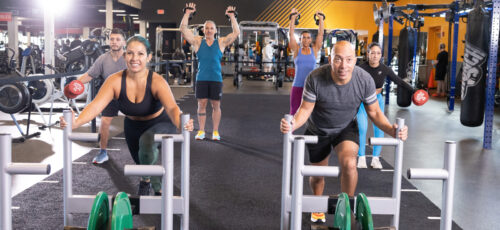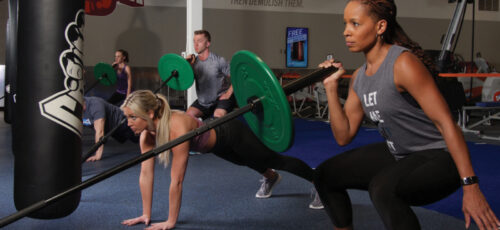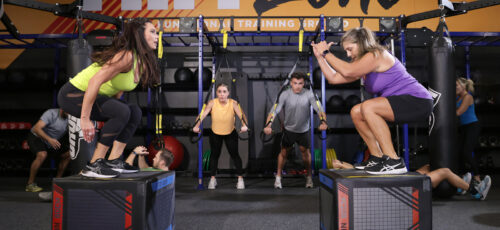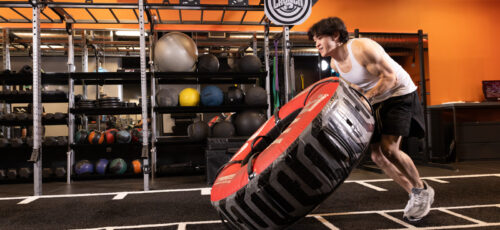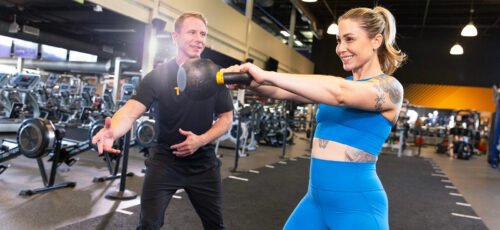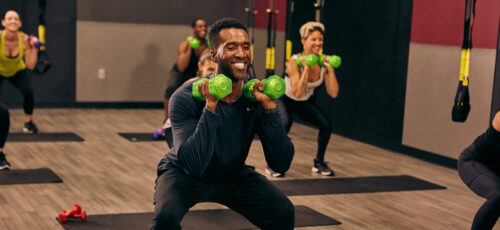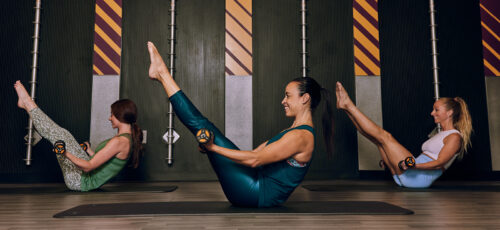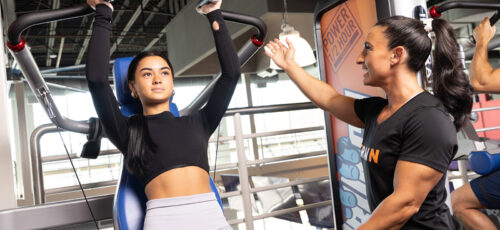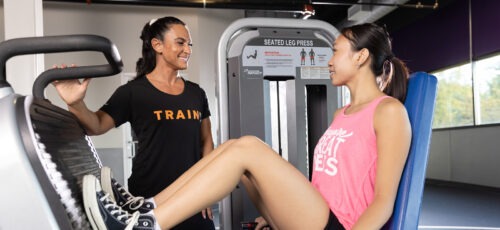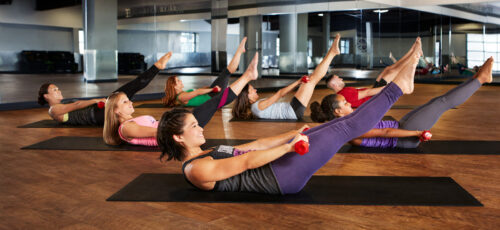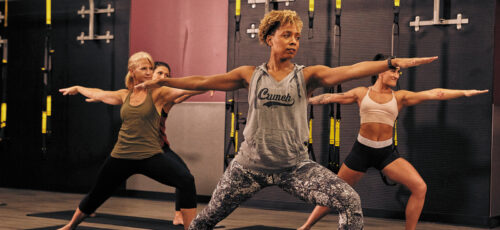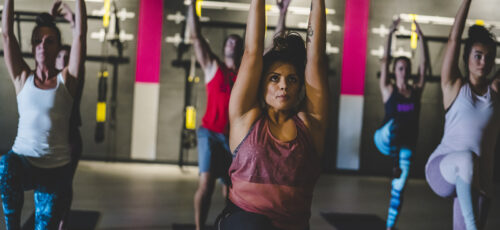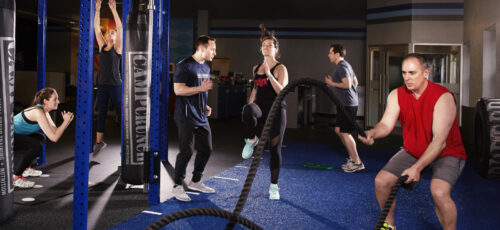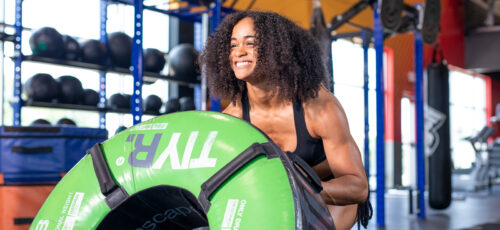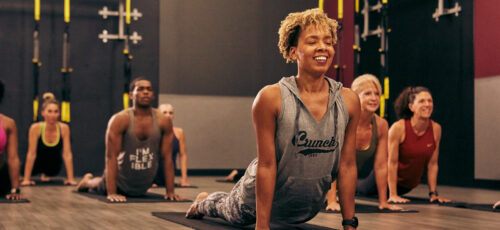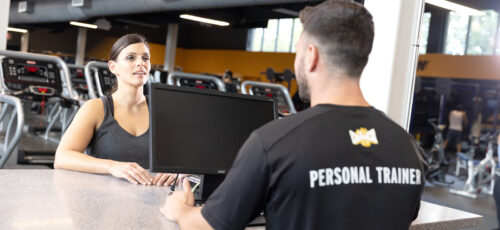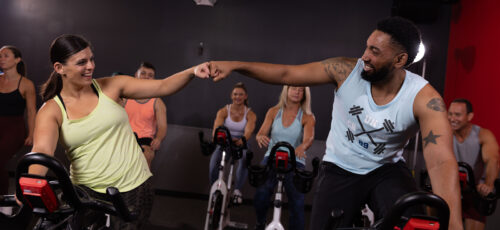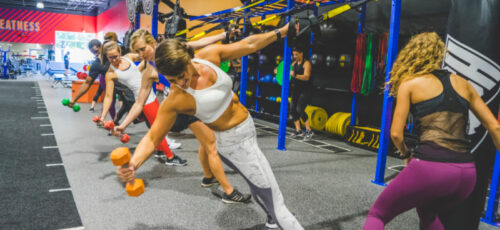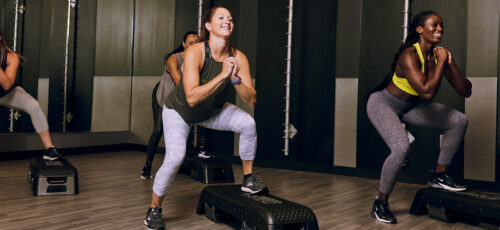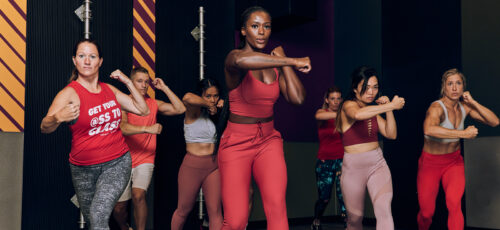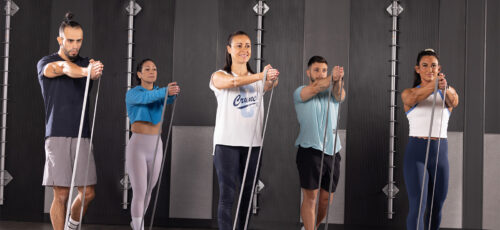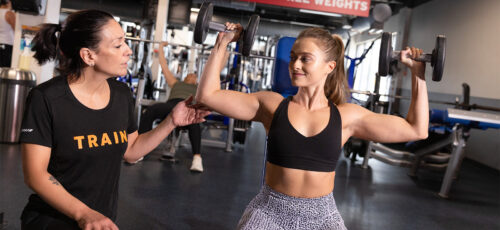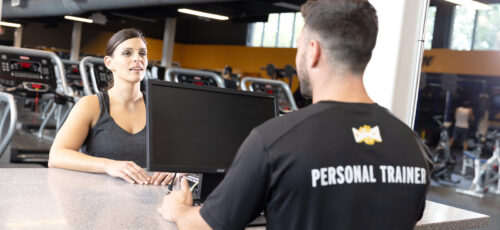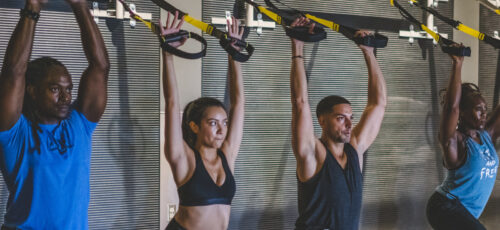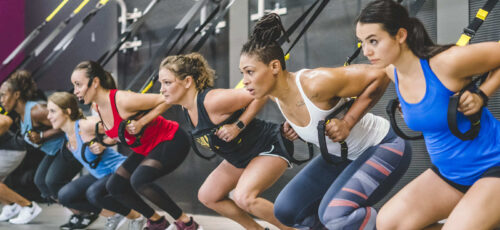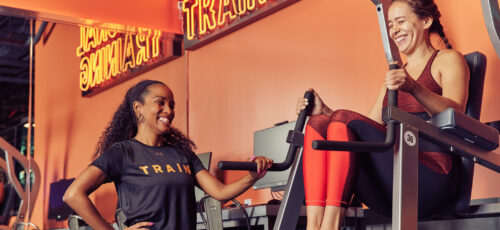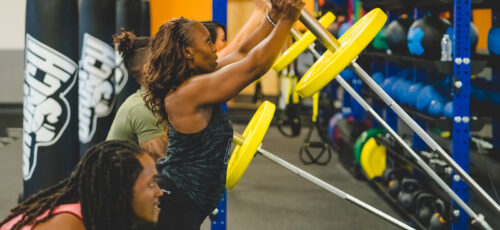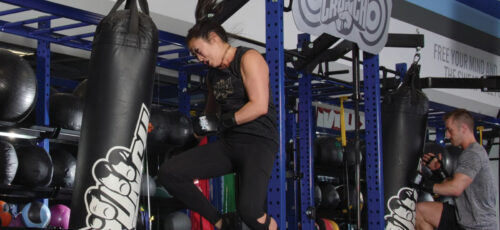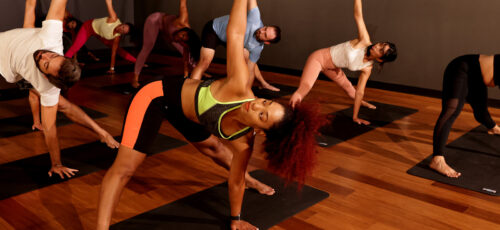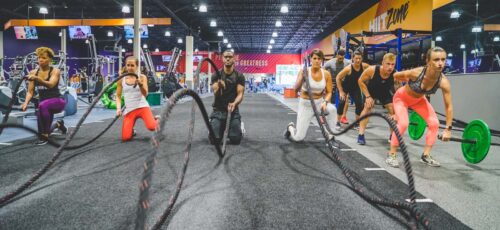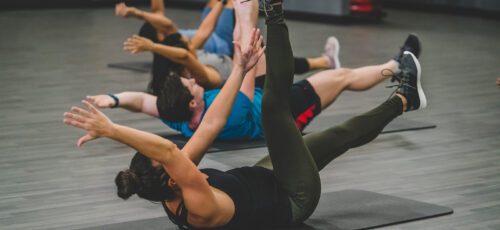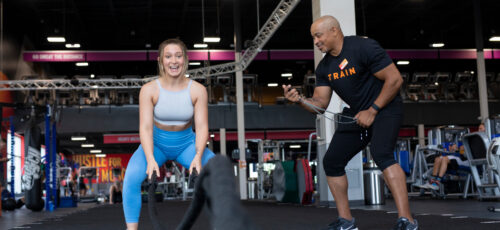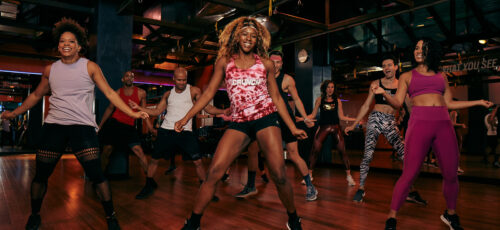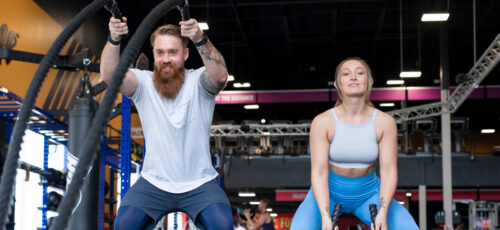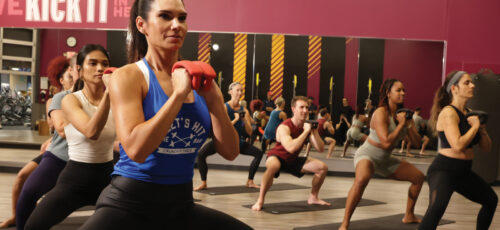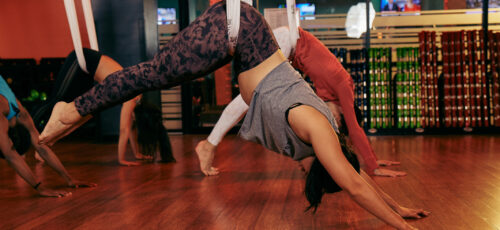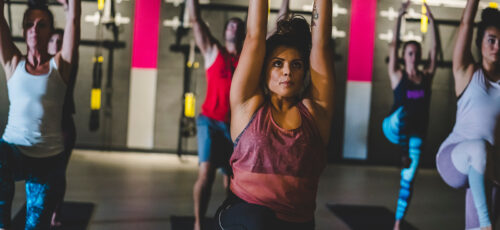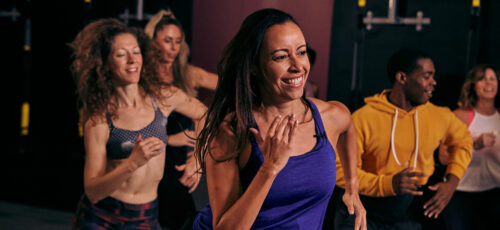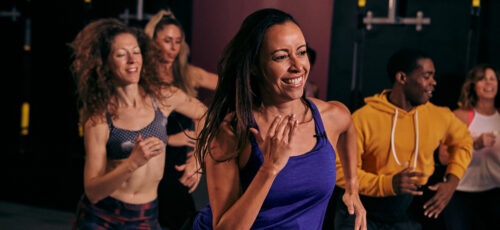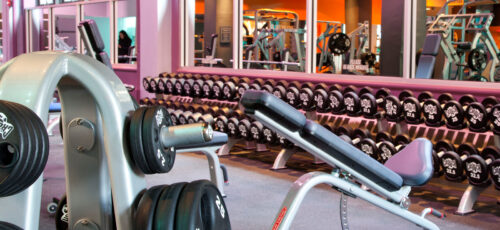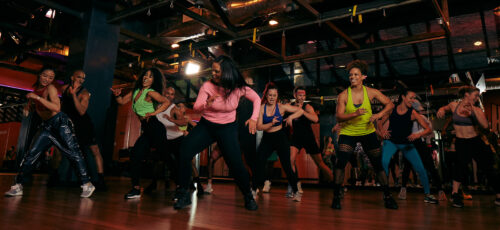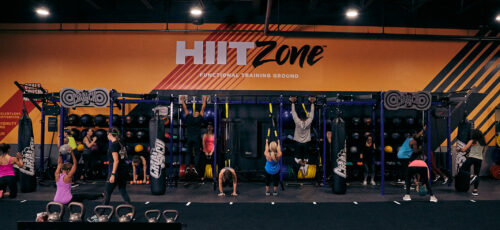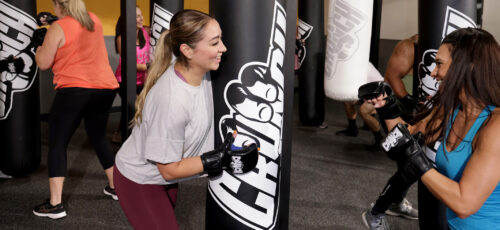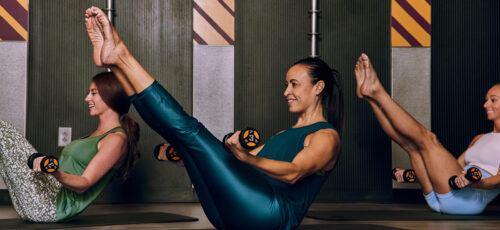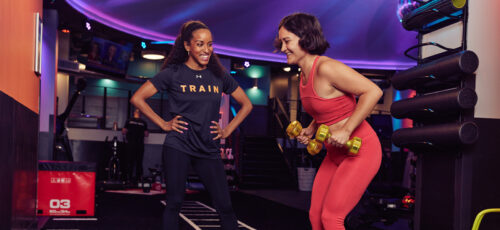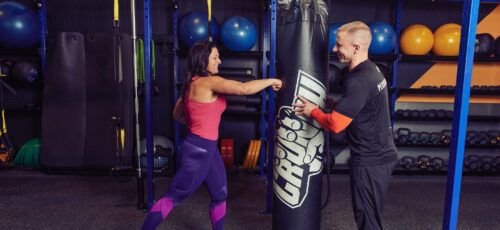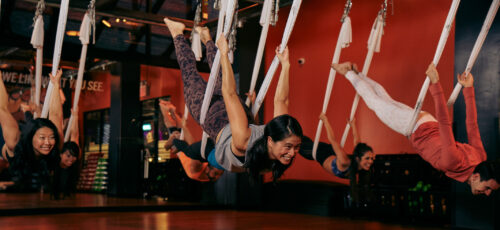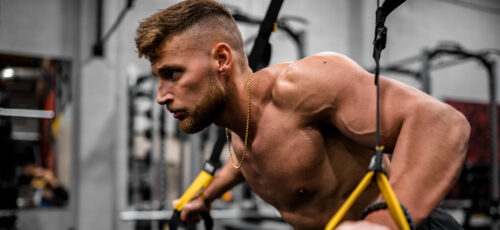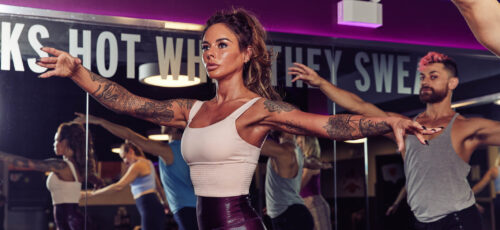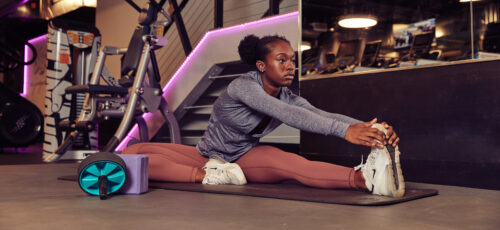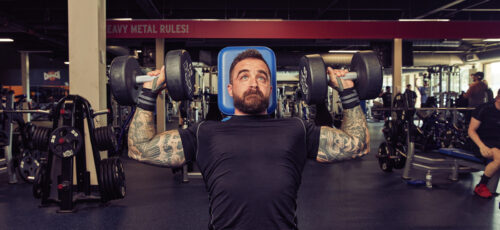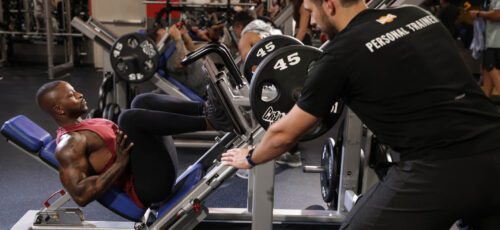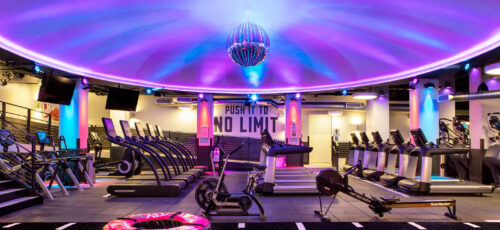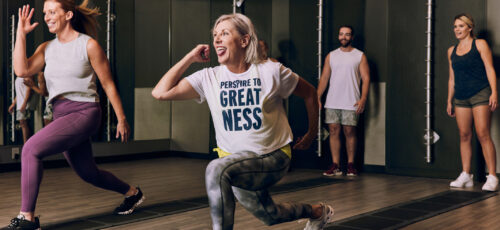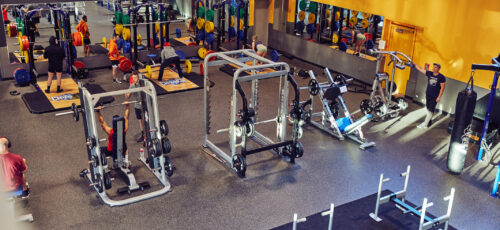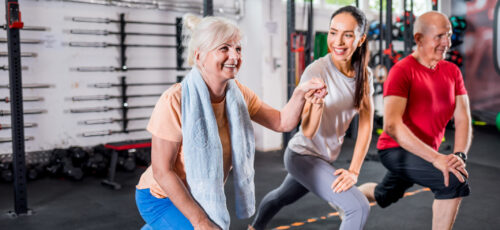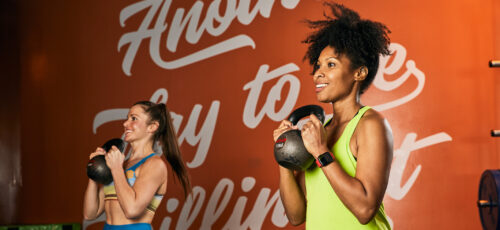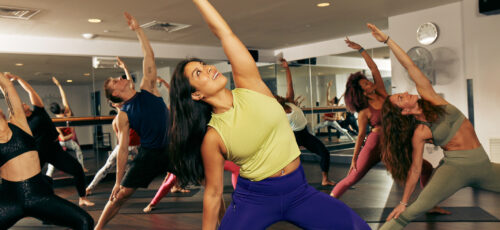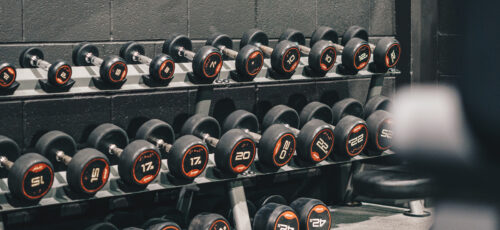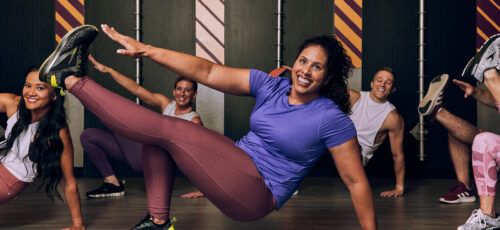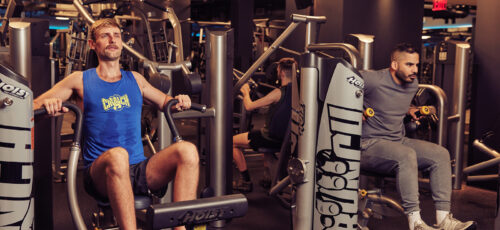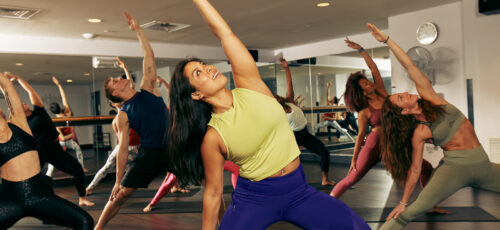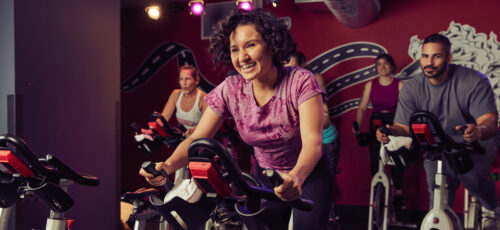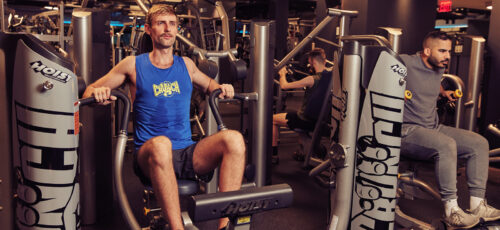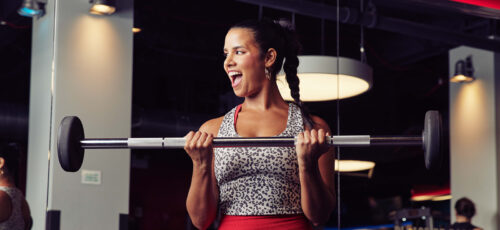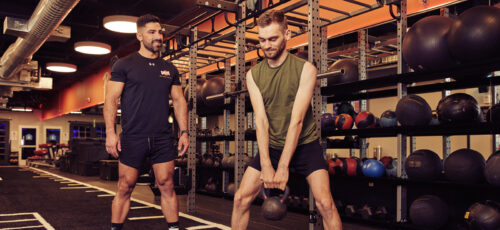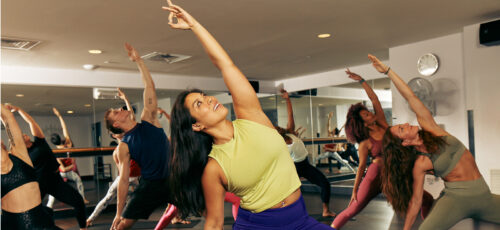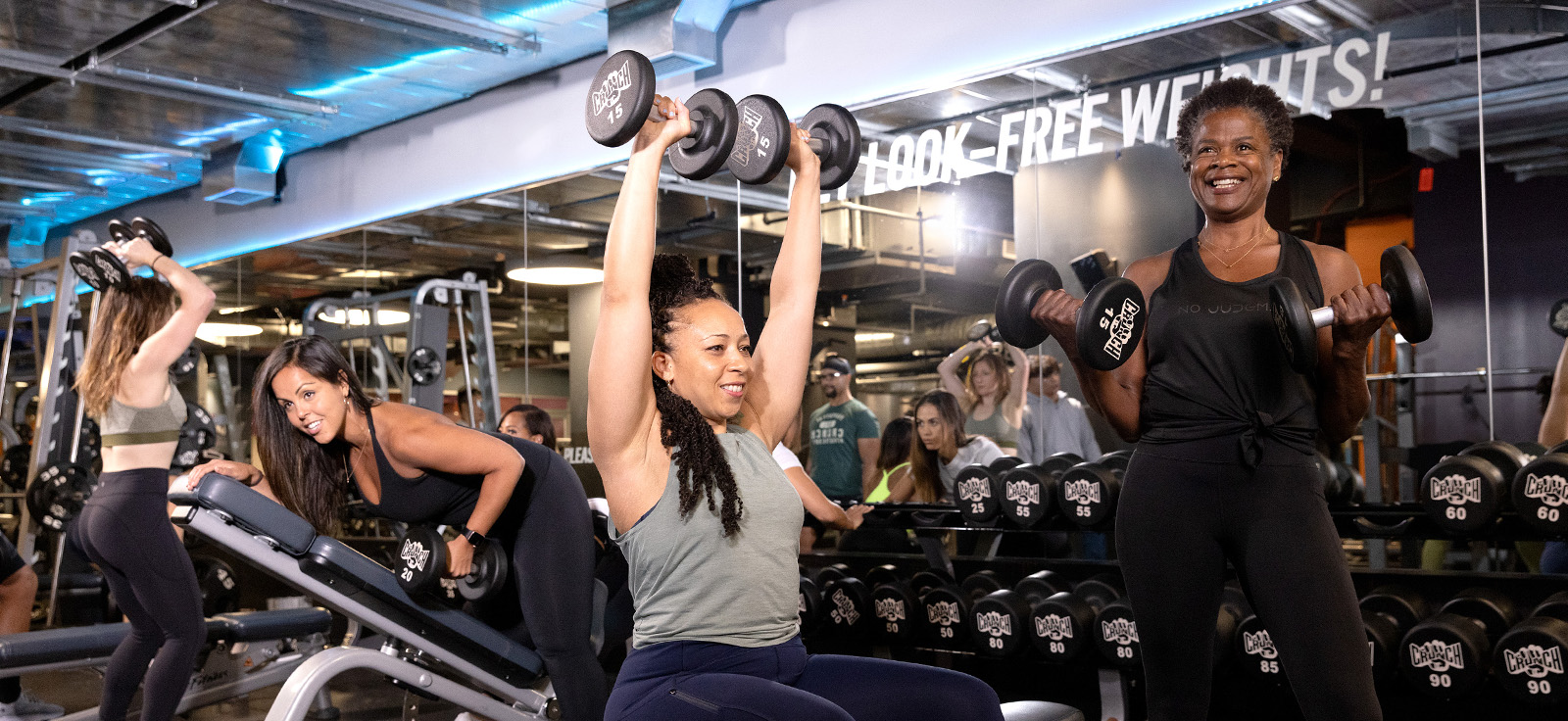
Our Beginner’s Guide To Strength Training
Think strength training is just about lifting heavy? Think again. It’s the secret sauce behind a stronger, leaner, more capable body, helping you power through life’s everyday challenges with confidence.
From carrying groceries to crushing your next gym session, resistance training improves muscle strength, boosts metabolism, enhances bone density, and helps you move better in every direction.
The best part? You don’t need to be a pro to see results. Whether you’re doing body weight exercises like push-ups and squats, using free weights, or trying weight machines, every rep strengthens your muscle fibers and builds long-term muscle mass.
With the right combination of multi-joint exercises, rest intervals, and proper form, you’ll feel stronger, more energized, and ready to take on anything, one rep at a time.
At Crunch Fitness, we make it easy to begin your journey. Our functional training zones, group fitness classes, and certified personal trainers provide everything you need to build your confidence and crush your goals.
Ready to learn how to build lasting strength the smart way? Keep reading our Beginner’s Guide to Strength Training; your first step to transforming your fitness routine and unlocking your body’s full potential.
What Is Strength Training and Why Should You Start?
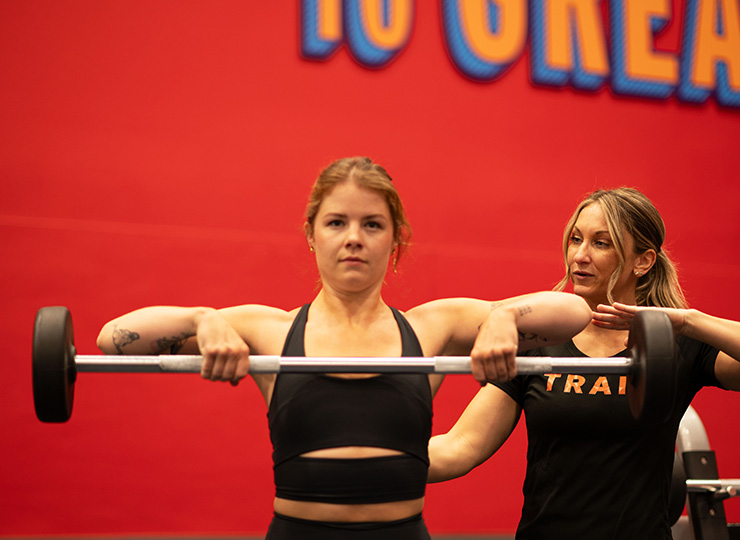
Strength training or resistance training is the art of challenging your muscles so they adapt, rebuild, and get stronger. It’s not just about lifting more weight; it’s about teaching your muscle fibers to work smarter and harder through consistent, progressive effort.
Every time you perform strength training exercises, you’re sending a signal to your muscles to grow, recover, and perform better.
Unlike aerobic exercise, which targets endurance, strength training focuses on muscle strength, bone density, and functional power. It’s the ultimate upgrade for your entire body.
Strength training builds the foundation for lasting health, and helps improve posture, coordination, and metabolism. You’ll notice better body composition, fewer aches, and a lower risk of injury, all while feeling more capable in your everyday activities.
Strength training isn’t reserved for athletes or fitness pros. It’s for anyone who wants to feel stronger, move better, and age with confidence. At Crunch Fitness, we make starting a beginner strength training routine simple, fun, and effective, marking the first step toward becoming a stronger, healthier version of yourself.
How To Begin Strength Training
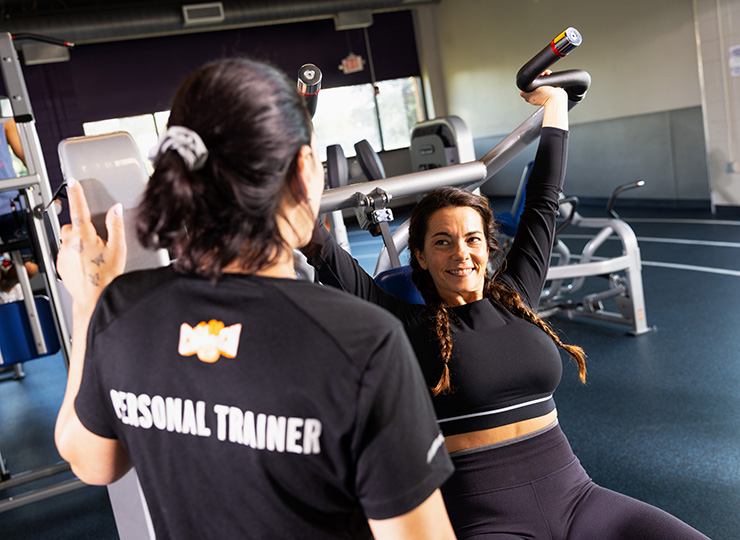
A beginner’s guide to strength training starts with a solid foundation, not random reps. Before diving in, take time to assess your fitness level and set realistic goals.
- Learn before you lift: Master fundamental movements and body weight exercises to build balance, control, and confidence.
- Start small, progress smart: The best way to build strength is gradually by focusing on full-body strength routines and consistent workouts.
- Focus on proper form: Every rep matters! Good technique prevents injuries and ensures long-term results.
- Get professional support: Starting a strength training program with a personal trainer helps you move safely, understand your muscle groups, and track progress effectively.
At Crunch Fitness, we make strength training for beginners simple and motivating with expert coaches, supportive classes, and the tools to help you crush every workout with confidence.
What Is the Essential Strength Training Equipment Needed for Beginners?
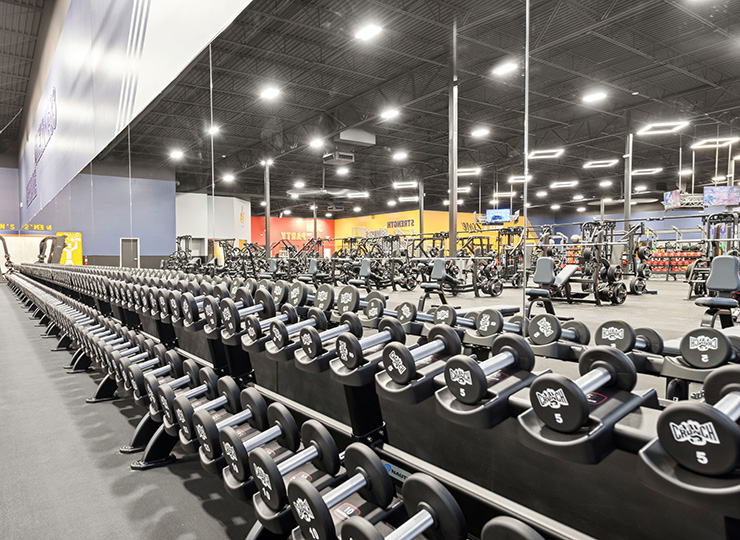
Starting strength training doesn’t mean you need to turn your living room into a mini gym. You can start a strength training plan for beginners with just your body weight, as shown in our article “Top Bodyweight Exercises for Beginners with No Equipment“.
These moves build coordination and teach you proper form before adding resistance. But as your confidence grows, so should your tools.
At Crunch Fitness, you’ll find everything you need to level up your strength training routine, from free weights and weight machines to resistance bands and stability balls. Each piece of equipment serves a unique purpose in your plan for beginners:
- Free weights build functional strength and balance.
- Machines offer guided stability for safe learning.
- Bodyweight training strengthens control and endurance.
What is the advantage of working out at the gym over home setups? Variety and progression. A gym environment gives you access to equipment options that target multiple muscle groups, allowing you to perform workouts that build strength and challenge your body in new ways.
Plus, with expert trainers, you’ll always have guidance for safely and effectively using the right equipment for your full-body strength routine.
Free Weights vs. Machines for Beginners
If you’re new to strength training, machines can be your best friends. They keep your movements stable, teach proper technique, and reduce the risk of injury, making them perfect for anyone starting a strength training program.
Once you’re comfortable, free weights like dumbbells and barbells help develop functional muscle strength, balance, and coordination.
The best way to build strength is a combo of both: machines for control, free weights for freedom. Luckily, Crunch Fitness makes it easy to transition as you progress, offering endless options for every fitness level.
Read our article: Free Weights vs. Machines
Helpful Accessories and Tools
Don’t overlook the small but mighty helpers! Accessories like resistance bands, medicine balls, and foam rollers enhance your beginner strength training experience.
They make warm-ups smoother, recovery faster, and workouts more adaptable for all fitness levels. At Crunch Fitness, you’ll find these tools ready to use; no extra cost, no home storage headache.
Just show up, grab your gear, and keep building that stronger, more confident you.
Fundamental Strength Training Exercises for Beginners
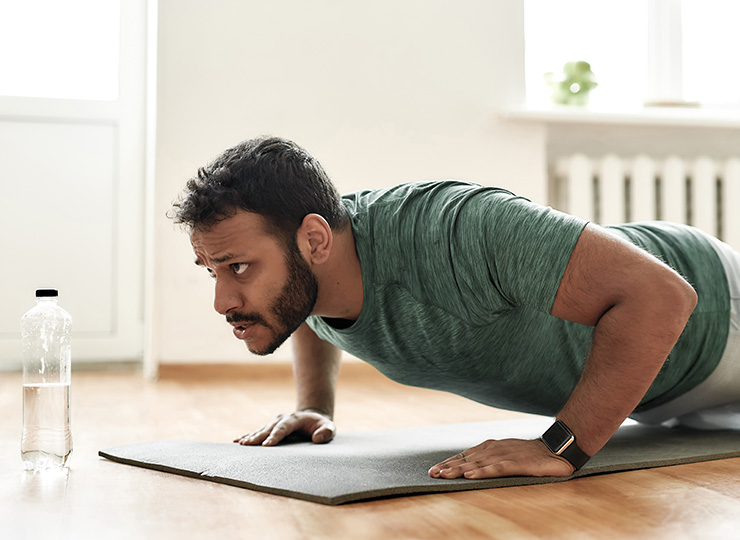
Every strong body starts with the basics, and in strength training for beginners, simple is smarter. Think of these moves as your gym foundation: the bread and butter of every effective full-body strength routine.
You don’t need fancy tricks or complicated routines; just a few well-practiced exercises that work multiple muscle groups and deliver real results.
Compound exercises like squats, rows, and presses are your best friends here. Why? Because they train your body to move as one powerful unit, helping you build strength that actually shows up in real life, whether you’re hoisting luggage, climbing stairs, or chasing your dog.
Start light, focus on proper form, and as your confidence grows, add more weight or advanced variations. Remember: progress beats perfection every single time.
And if you’re not sure where to begin, Crunch Fitness has your back (and your glutes, arms, and abs). Our trainers explain step by step, keeping things safe, fun, and totally beginner-friendly.
Upper Body Strength Training Exercises
Ready to give your upper body some love? Start with the classics:
- Push-ups
- Assisted pull-ups
- Chest presses
- Rows
These upper-body exercises build strong arms, shoulders, and back muscles; the kind that make carrying groceries or crushing a HIIT class feel like a breeze.
Lower Body Exercises
Never skip leg day. Seriously. Squats, lunges, and deadlifts work your major muscle groups and are the best way to build strength while burning calories.
Begin with body weight versions to master your form before adding free weights or machines. Keep your chest lifted, knees aligned, and back neutral; your future self (and knees) will thank you.
Core Exercises
Think of your core as your body’s powerhouse; it holds everything together. Start with planks, dead bugs, and modified crunches to build stability and balance. Once you’ve nailed those, try adding movement with stability balls or mountain climbers for extra challenge.
A strong core makes every lift safer, every run smoother, and every workout more effective. And at Crunch Fitness, you’ll find the guidance, gear, and good vibes to make every rep count, abs, laughs, and all.
How Much Strength Training Is Enough for Beginners?
Here’s a secret: when you’re new to strength training, less is often more. Your body is a fast learner, so it doesn’t take marathon sessions to start seeing results.
According to the American College of Sports Medicine (ACSM), healthy adults can see noticeable strength gains with just 2–3 strength training sessions per week, each lasting 30–45 minutes. That’s right; you don’t have to live in the gym to see results.
In the early months, consistency beats intensity. You don’t have to lift heavy or train daily to make progress. What matters is showing up regularly, focusing on proper form, and letting your muscles adapt.
Over time, you’ll naturally apply progressive overload, adding a few pounds, a couple more reps, or an extra training day as your confidence and capability grow. Think of it as upgrading your fitness, one small win at a time.
How to Create Your First Strength Training Program
Designing your first beginner strength training program doesn’t have to be complicated. Start with full-body workouts that target every major muscle group, including the upper body, lower body, and core, in each session. Include both pushing (like chest presses or squats) and pulling (like rows or assisted pull-ups) exercises for balance and posture.
A good starter plan includes 2–3 sets of 8–12 repetitions, with rest periods of 30–90 seconds between sets. Always warm up with light cardio or mobility work, and cool down afterward to help your muscles recover. For even better results, add 75–150 minutes of cardio weekly — it boosts endurance, aids recovery, and supports overall health.
Weekly Schedule and Progression
A sample week might look like this:
- Monday: Full-body workout
- Wednesday: Recovery or light cardio
- Friday: Full-body workout
- Weekend: Optional active day: yoga, walking, or stretching
As you grow stronger, you can increase your training frequency to 3–4 days or add more challenging variations. If your workouts start feeling too easy or your last reps aren’t challenging, it’s time to lift a little more weight or add another set.
Just remember, progress should feel steady, not sudden.
How to Set Realistic Goals and Expectations
Set short-term goals like mastering your form or completing three workouts a week. Long-term goals include increasing your muscle strength or completing your first full-body strength routine without modifications.
Most people notice strength gains within 2–4 weeks, but results vary depending on age, starting fitness level, and effort. Celebrate the wins beyond the mirror, like better sleep, more energy, and feeling unstoppable during everyday activities.
Read our article: How to Define SMART Fitness Goals and Stick to Achievable Routines
How to Use Proper Nutrition to Support Your Strength Training Goals
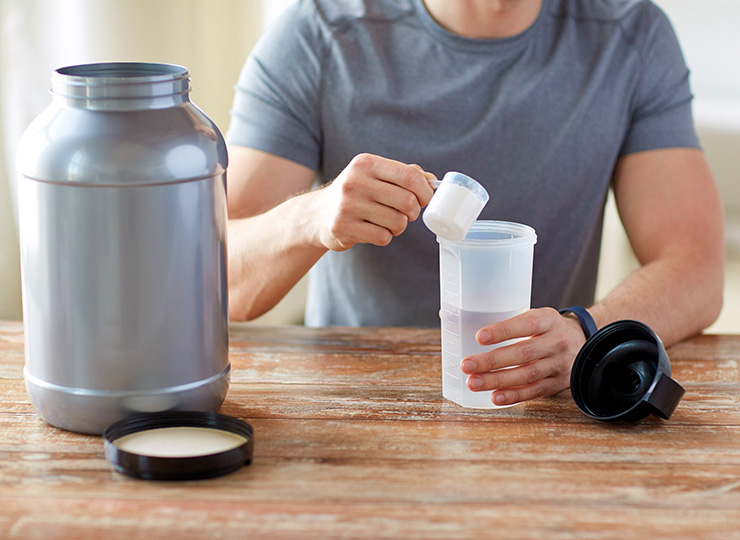
You can lift all the free weights in the world, but without the right fuel, your progress will stall faster than a bad rep. Proper nutrition is the secret weapon behind every successful strength training program; it powers your workouts, repairs muscle fibers, and keeps your energy levels steady.
Start with protein, the star of muscle recovery and growth. Aim for a serving of lean protein (like chicken, tofu, eggs, or Greek yogurt) after every session to help rebuild and strengthen your muscles.
Carbohydrates are your body’s preferred energy source, so include complex carbs like oats, brown rice, or sweet potatoes before and after training to refuel.
Don’t forget healthy fats, like avocados, nuts, and olive oil, support hormone production and help your body bounce back between workouts.
Meal timing matters, too. A small carb-and-protein snack an hour before training boosts performance, while a balanced post-workout meal jump-starts recovery.
Lastly, hydrate like it’s your job. Water supports every muscular contraction, regulates temperature, and aids recovery. With regular strength training, you’ll need more fluids than you think, so keep that water bottle close!
Read our article: The No-Carb Diet Plan
8 Tips for Safe and Effective Strength Training
Even the best workouts to build strength can backfire without proper technique.
Here’s how to stay safe and strong:
- Prioritize form over weight: Proper movement prevents injury and builds better habits long-term.
- Warm up every time: A few minutes of mobility or light cardio wakes up your muscles and joints.
- Progress gradually: Increase weight or reps slowly to let your muscle groups adapt.
- Train evenly: Balance upper body, lower body, and core work to avoid imbalances.
- Listen to your body: Pain is not progress; learn to spot the difference between fatigue and strain.
- Be consistent: Regular sessions beat random bursts of overtraining every time.
- Use safety gear: Spotters, straps, or racks keep you protected during lifts like the bench press.
- Get expert help: Personal trainers at Crunch Fitness ensure your technique, progression, and goals align.
How to Track Strength Training Progress
Keep a workout log to track your sets, number of repetitions, and weight used. Seeing those numbers go up week after week is a serious motivation booster.
Take progress photos and body measurements. You might gain muscle mass (and lose fat) even if the scale doesn’t budge. Use strength benchmarks (like increasing your squat or push-up count) to gauge improvement.
Tracking your performance helps you identify what’s working and when to make changes. And when motivation dips, it reminds you how far you’ve come.
Join Us!
Crunch promotes a culture of positivity, inclusivity, and fun with no judgments by providing an environment for all individuals regardless of their health and fitness goals. Find a Crunch gym near you to try our free trial membership, or join Crunch now. We’re here for you – at the gym or at home. Access the best live & on-demand workouts anytime, anywhere with Crunch+. Ready to get sweaty? Try hundreds of workouts for free! Start your free trial now!
FAQ’s
How Long Before I See Results From Strength Training?
Most beginners notice progress in 3–4 weeks: more energy, strength, and confidence. Visible muscle changes usually appear after 6–8 weeks with consistent workouts and good nutrition.
Can I Do Strength Training Every Day As A Beginner?
Not recommended. Start with 2–3 sessions per week to allow proper muscle recovery. Rest days are key for growth and preventing injuries.
What Should I Eat Before And After Strength Training?
Eat carbs and protein before energy training, and protein with complex carbs afterward to support recovery. Stay hydrated before, during, and after workouts.
Is It Normal To Be Sore After Strength Training?
Yes! Mild soreness 24–48 hours later means your muscles are adapting. It’s normal. Move, stretch, and hydrate. Sharp or lasting pain isn’t.
How Much Weight Should I Start With?
Pick a weight you can lift for 8–12 reps with good form. The last few reps should feel challenging but controlled. Add more weight gradually as you get stronger.









